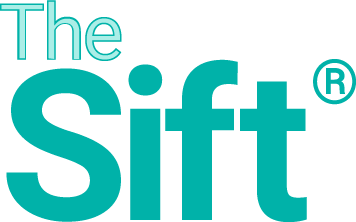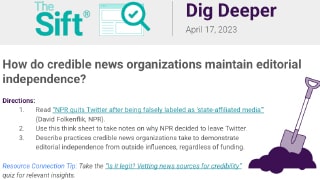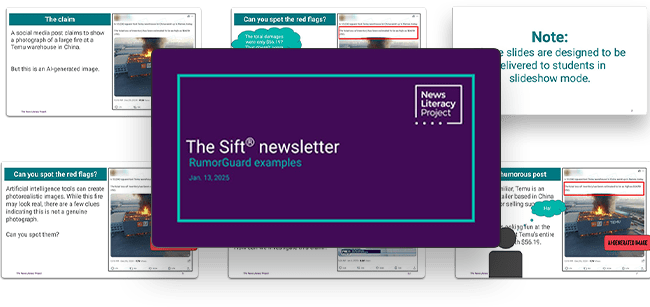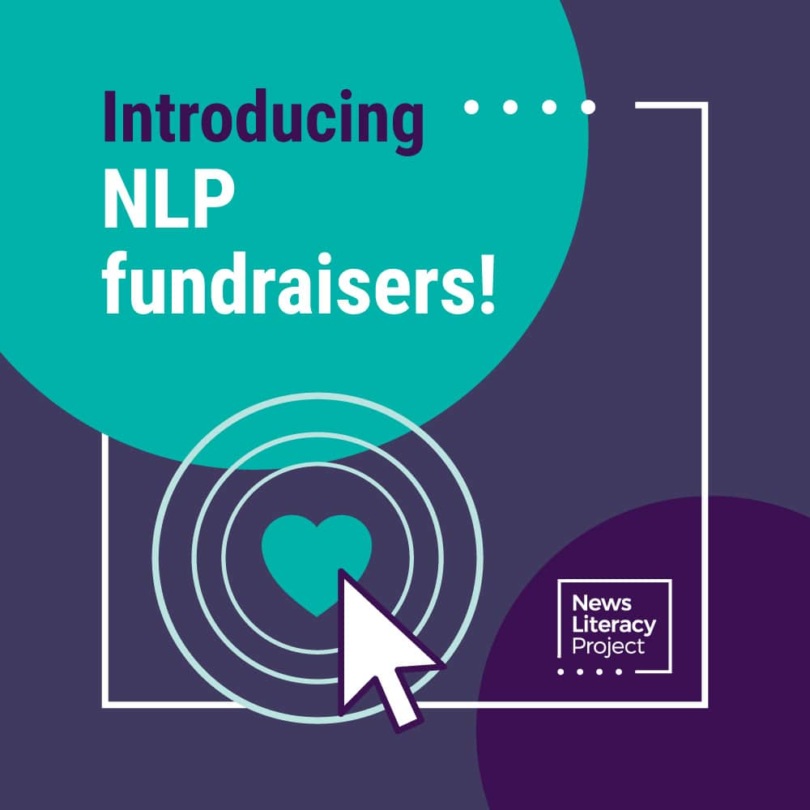The Sift: Cartoonist quits | TikTok ban looms
| Note: There will be no issue of The Sift next Monday (Martin Luther King Jr. Day). We’ll return to your inbox on Monday, Jan. 27. |
In this issue
Cartoonist quits | TikTok ban looms | RumorGuard slides | Daily Do Now slides
 Daily Do Now slidesDon't miss this week's classroom-ready resource.  |
Top picks
Educators, here are the latest news literacy topics and tips on how to integrate them into your classroom.
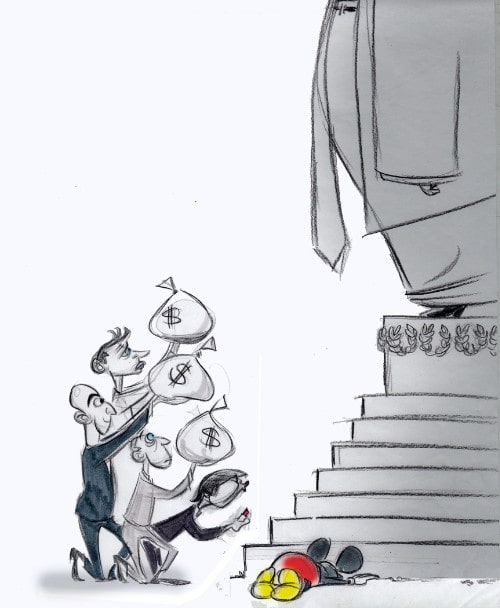
| This sketch by political cartoonist Ann Telnaes was rejected by The Washington Post. Image credit: Ann Telnaes. |
1. Cartoonist quits after The Washington Post rejects drawing
Cartoonists are rallying behind Pulitzer Prize winner Ann Telnaes, who recently resigned her position at The Washington Post after the opinion editor rejected a drawing of hers that was critical of Post owner Jeff Bezos and other billionaire tech and media chief executives. Political cartoonist Lalo Alcaraz responded by writing “Democracy dies in darkness” under his illustrated depiction of Telnaes, which shows her shining a light with her cartoon. Another tribute came from cartoonist Barry Blitt, known for his New Yorker covers, who drew his own version of her cartoon in solidarity.
Telnaes wrote in a Substack post that the Post’s decision sets a dangerous precedent for press freedom: “As an editorial cartoonist, my job is to hold powerful people and institutions accountable.”
| Note: |
Alcaraz has volunteered with the News Literacy Project and hosts the “Power in Art” Checkology® lesson.
| Discuss: |
How do political cartoonists hold those in power accountable? What role do political cartoonists play in a democracy? What can a cartoon do or express that text alone cannot? Why do political cartoons elicit strong responses, including from those in power?
| Idea: |
Share these political cartoon examples from KQED and ask students to analyze the cartoons’ messages and visual symbols.
- Another idea: Share this NLP TikTok or use the “Analyze” slide from Week 12 of the Daily Do Now resource to further discuss this issue. (You can also find the video on Facebook, Instagram and YouTube.)
| Related: |
- “Scores of Cartoonists (So Far) Stand With Ann Telnaes” (The Daily Cartoonist).
- “Washington Post Cartoonist Quits After Jeff Bezos Cartoon Is Killed” (The New York Times).
★ NLP Resources:
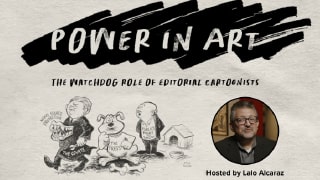

“Power in Art: The Watchdog Role of Editorial Cartoonists” (Checkology® virtual classroom).


Recorded webinar: “Power in Art: Elevate Student Voice with Editorial Cartooning.”
2. Meta scraps fact-checking program
Meta announced it is ending its fact-checking program and replacing it with a user-written Community Notes model similar to content moderation on X. CEO Mark Zuckerberg said in his announcement that the decision was made to elevate free speech on the platforms, adding that fact-checkers had been “too politically motivated.” But fact-checkers have pushed back on this claim, strongly denying the allegation of political bias and pointing out that it was ultimately up to Meta to decide what to do with fact-checked content. Misinformation experts and researchers worry that removing fact-checkers will further enable the spread mis- and disinformation on Meta’s platforms, which include Facebook, Instagram and Threads.
| Idea: |
Share this NLP TikTok video on Meta’s decision. Then discuss the following questions as a class. (This video is also available on Facebook and Instagram.)
| Discuss: |
Do you agree with the decision to end the fact-checking program at Facebook, Instagram and Threads? Why or why not? What role do fact-checkers play in content moderation on social media sites? How should social media companies balance free speech considerations with concerns over harmful content? What skills can help equip social media users in countering online misinformation?
| Related: |
- “Meta ends fact-checking. Here’s how to find the truth on social media.” (The Washington Post).
- “No more fact-checking for Meta. How will this change media — and the pursuit of truth?” (The Associated Press).
- “Does crowdsourced fact-checking work? Experts are skeptical of Meta’s plan” (Poynter).
★ NLP Resources:


“Introduction to Algorithms” (Checkology virtual classroom).
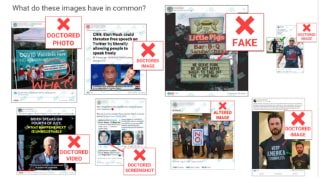

Lesson plan: “Fact-Checker”
3. Los Angeles wildfires personal for some journalists
Journalists are often trained to remove themselves from the stories they cover, but for some reporters covering the destructive Los Angeles wildfires, it’s personal. NBC News reporter Jacob Soboroff broke the “fourth wall” on air and shared his reaction with viewers when visiting his childhood home in the Pacific Palisades neighborhood, which burned to the ground along with many other homes and structures on the same street. He FaceTimed his mother as they processed the news. Soboroff later told the Associated Press, “It would almost be a disservice to hide the emotions about what I’ve seen.” This roundup of personal stories shares the experiences of other national and local reporters covering the deadly fires as they describe the moments that have impacted them the most.
| Idea: |
Invite a journalist through NLP’s Newsroom to Classroom program and ask them to share with students how they cover breaking news or stories that may be personal to them.
| Related: |
- ”Fighting Fires—and the Rumor Mill—as L.A. Burns” (The Wall Street Journal).
- “CNN team describes fleeing Southern California wildfire as flames surrounded their vehicle” (CNN).
- “How Outlets on the Left and Right Have Covered the Los Angeles Wildfires” (The New York Times).
★ NLP Resources:


Infographic: “Breaking news checklist”


“Practicing Quality Journalism” (Checkology virtual classroom).


★ Featured classroom resource:
|
Image of Temu warehouse fire is AI-generated


❌ NO: This is not an authentic photograph of a Temu warehouse fire.
✅ YES: This is an AI-generated image.
★ NewsLit takeaway
AI image generators can produce near photorealistic images, which makes it important to double-check the veracity of viral content. Here are a few tips to spot these digitally created images while scrolling online:
- Check for news reports. If a viral image appears to show a newsworthy event (such as a warehouse fire), performing a quick search for relevant news articles can provide important context.
- Consider the source. Taking time to evaluate the account sharing the image is another useful practice. Does the account have firsthand knowledge of the event? Or is it simply sharing someone else’s image?
- Carefully examine the image. Identifying AI-generated content is increasingly difficult, but these images often contain clues about their origins. In this case, a watermark for Grok, an AI chatbot that can also generate images, can be seen in the bottom-right corner.
California fires spark falsehoods about water shortages
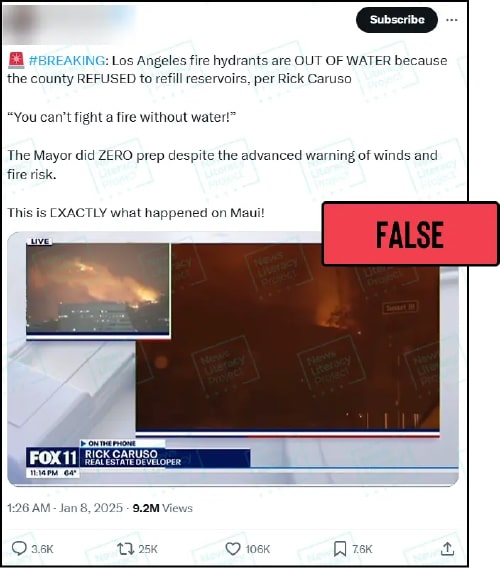

✅ YES: Some fire hydrants ran out of water as firefighters attempted to fight fires in California last week.
❌ NO: The shortage did not occur because Los Angeles “refused” to fill its reservoirs in the days before the fires.
✅ YES: All of the city’s 114 water tanks, including three million-gallon tanks in the Pacific Palisades area, were full on Jan. 7, before the fires.
✅ YES: The sharp increase in demand for water at lower elevations made it harder to refill tanks in the hillier locations where fires were also spreading.
★ NewsLit takeaway
During a breaking news event, be extra cautious about social media coverage, since some accounts attempt to exploit the tragedy by sharing inaccurate or conspiratorial claims. Here are some tips to stay reliably informed:
Follow reliable sources. Look for credible news sources, including local reporters on the ground, to make sure that your feed is full of trustworthy reporting.
Don’t rely on social media. Provocative or sensational posts and images rarely contain enough context to deliver a full and accurate account during breaking news events. Instead of scrolling, click on available links and read full news articles.
Check for evidence. When a social media post includes a claim that can be verified, such as the assertion that reservoirs were empty before the fires, investigate it before sharing. Several credible news outlets reported that local officials said the reservoirs were full before the fires.


| All eyes are on the looming TikTok ban as the Supreme Court appears poised to uphold the law, effectively banning the platform in the U.S. The measure would require the app to be sold by its Chinese parent company or shut down. | |
| Some Instagram users may soon be seeing AI-generated images of themselves on their feeds as the platform tests a feature that shows these automated images to users. | |
| Can you spot red flags of unproven “wellness woo” and health misinformation online? This Guardian piece has tips for guarding against pseudoscience and bogus health claims. | |
| Italian journalist Cecilia Sala returned home after she was detained in an Iranian prison for three weeks. Reporters Without Borders says 25 journalists remain imprisoned in Iran. | |
| Should newspapers delete old crime stories? When the crime is nonviolent and past coverage is impeding a person’s life, some newsrooms — including Cleveland.com, The Boston Globe, The Atlanta-Journal Constitution, Bangor Daily News, The Oregonian and NJ.com — are now considering requests to remove or edit out names and give people the “right to be forgotten” in the digital age. | |
| As the newspaper industry continues to face instability and layoffs, employee-owned publications like the Long Beach Watchdog in California and The 51st in Washington, D.C., are starting to emerge. These news sites aren’t beholden to wealthy owners or investors, but still face challenges like fundraising and growing subscribers. | |
Pressers and phoners and beats and deks are all journalism lingo — but what do they mean? Poynter has a new list of journalism vocabulary that defines these terms and more.
|
|
| Special education students in Spokane, Washington, launched their elementary school’s first student newspaper — and the idea was sparked from a student who initially didn’t enjoy writing. |
Thanks for reading!
Your weekly issue of The Sift is created by Susan Minichiello (@susanmini.bsky.social), Dan Evon (@danieljevon), Peter Adams (@peteradams.bsky.social), Hannah Covington (@hannahcov.bsky.social) and Pamela Brunskill (@PamelaBrunskill). It is edited by Mary Kane (@mk6325.bsky.social) and Lourdes Venard (@lourdesvenard.bsky.social).
You’ll find teachable moments from our previous issues in the archives. Send your suggestions and success stories to [email protected].
Subscribe to this newsletterSign up to receive NLP Connections (news about our work) or switch your subscription to the non-educator version of The Sift called Get Smart About News here. |


Check out NLP's Checkology virtual classroom, where students learn how to navigate today’s information landscape by developing news literacy skills.

